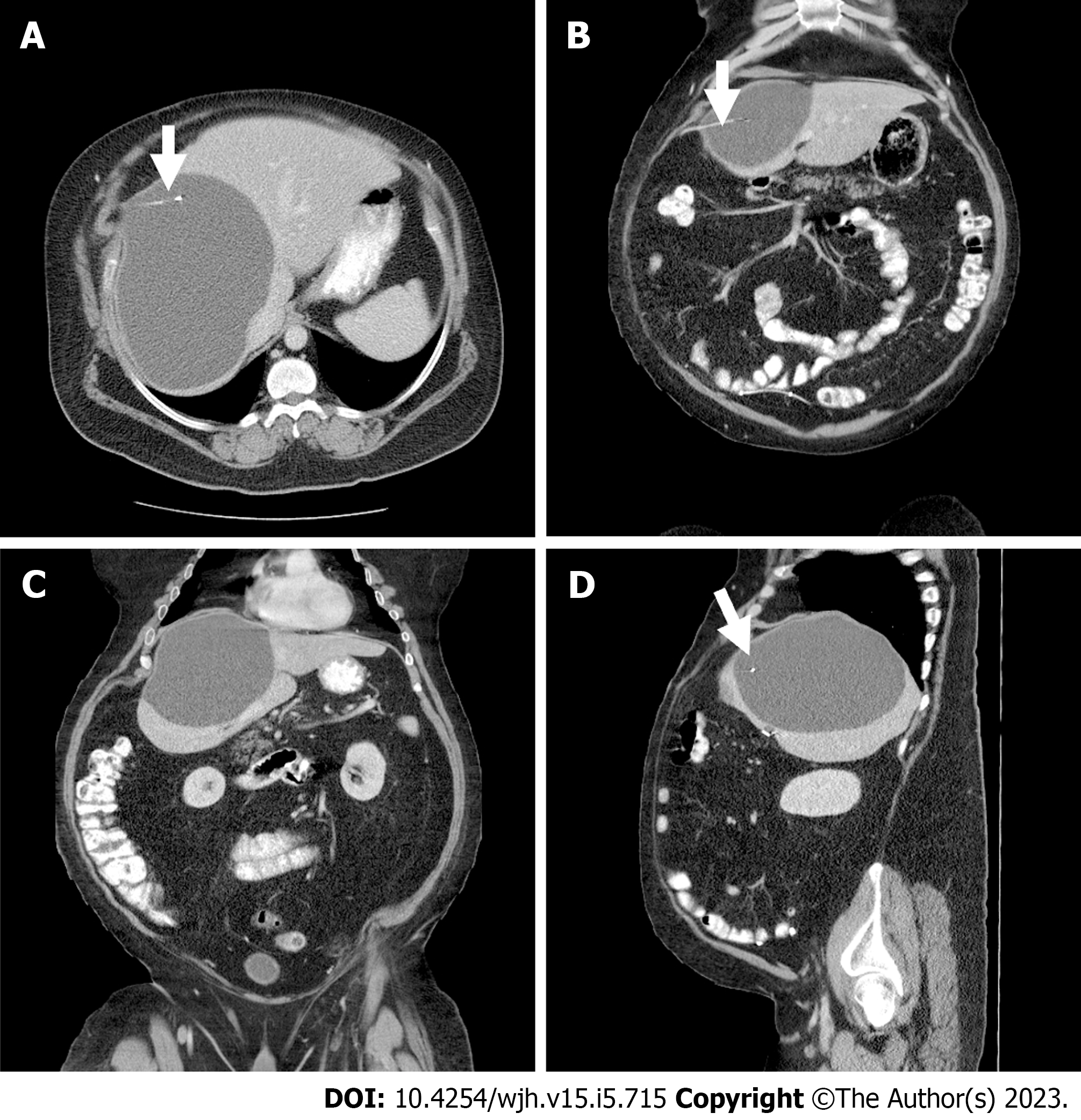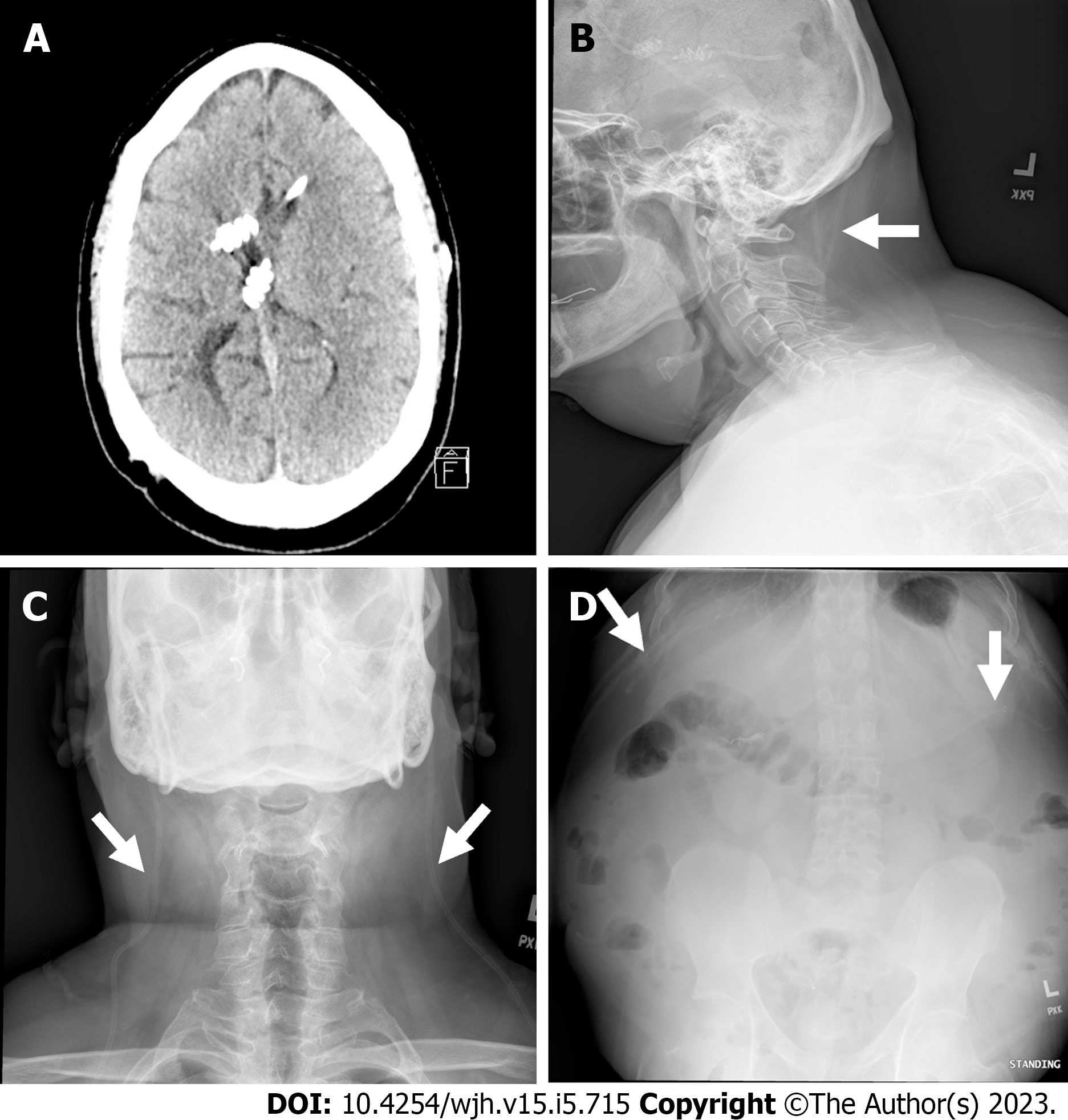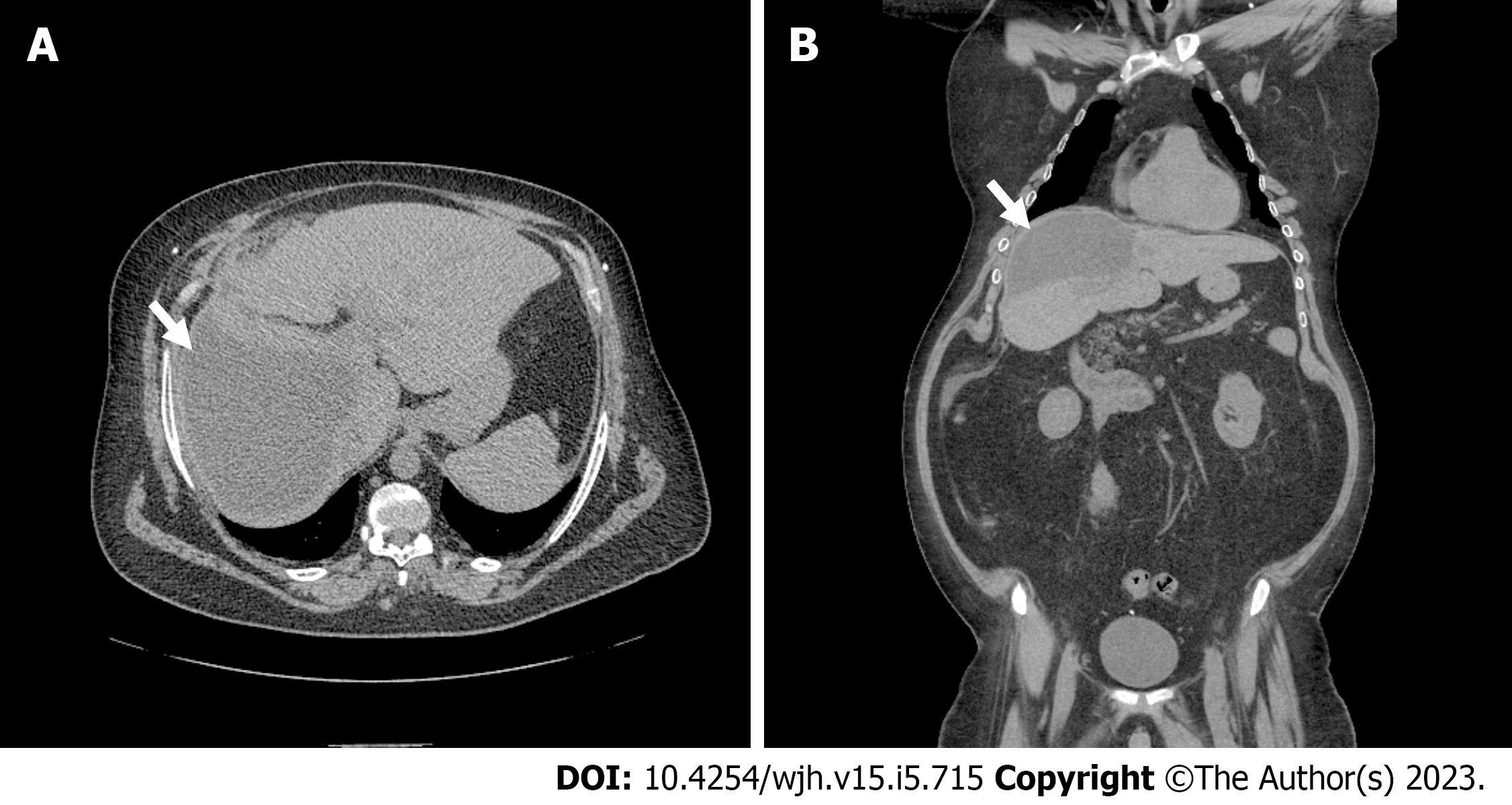Copyright
©The Author(s) 2023.
World J Hepatol. May 27, 2023; 15(5): 715-724
Published online May 27, 2023. doi: 10.4254/wjh.v15.i5.715
Published online May 27, 2023. doi: 10.4254/wjh.v15.i5.715
Figure 1 Computed tomography scan of abdomen.
A: Transverse view shows a large right hepatic lobe cyst with evidence of tip of right ventriculoperitoneal shunt catheter within the cavity of pseudocyst (arrows); B and C: Axial view of hepatic pseudocyst; D: Lateral view of hepatic pseudocyst with ventriculoperitoneal shunt catheter in cyst cavity (arrow).
Figure 2 Computed tomography scan of head and shunt series radiographs.
A: Computed tomography scan of head showing ventriculoperitoneal (VP) shunt catheters both in right and left lateral ventricles without evidence of ventricular dilation or VP shunt catheter displacement; B: Lateral view of shunt series radiograph showing right and left VP shunt catheter (arrows) without disruption through neck; C: Anterior-posterior view of shunt series radiograph showing intact VP shunt catheter through chest (arrows); D: Abdominal view of shunt series radiograph showing distal ends of right and left VP shunt catheter in the peritoneal cavity (arrows).
Figure 3
Hepatobiliary nuclear scan without evidence of biliary leak or dysfunction of sphincter of oddi.
Figure 4 Intraoperative images of hepatic cerebrospinal fluid pseudocyst.
A: A large right hepatic lobe pseudocyst with tip of right ventriculoperitoneal shunt catheter within the cyst cavity (arrow); B: A large volume of cerebrospinal fluid can be seen within the cyst cavity (arrow).
Figure 5 Computed tomography scan of abdomen and pelvis 5 wk after robotic laparoscopic cyst drainage.
A: Transverse view of computed tomography (CT) scan shows interval decrease in cyst size (arrow); B: Axial view of CT scan shows interval decrease in cyst size (arrow).
- Citation: Yousaf MN, Naqvi HA, Kane S, Chaudhary FS, Hawksworth J, Nayar VV, Faust TW. Cerebrospinal fluid liver pseudocyst: A bizarre long-term complication of ventriculoperitoneal shunt: A case report. World J Hepatol 2023; 15(5): 715-724
- URL: https://www.wjgnet.com/1948-5182/full/v15/i5/715.htm
- DOI: https://dx.doi.org/10.4254/wjh.v15.i5.715













